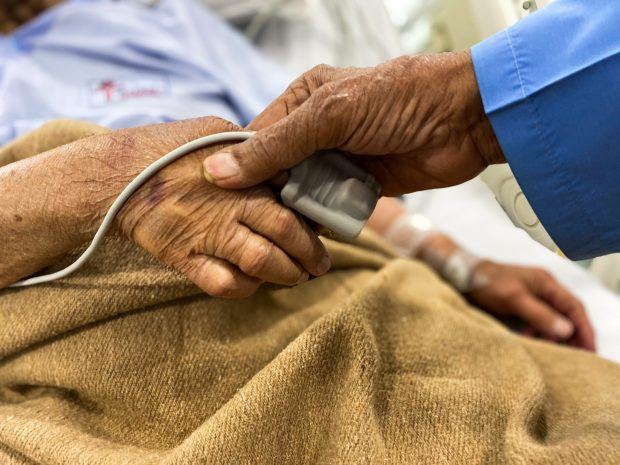Hydrogels are gels that have water as their main component. They are highly absorbent, yet they maintain well-defined structures. Because hydrogels can contain up to 99% water, medical research is finding many biomedical applications for them.
These applications will especially help the elderly and improve their quality of life because they are the most prone to tissue damage. The following are ways in which hydrogels are improving the quality of life for the elderly:
Medical Dressing
Trauma and subsequent infections are widespread in medical institutions. Medical dressings are typically used to provide a protective barrier for wounds and prevent infection. In addition to covering wounds, medical dressing also absorbs wound secretions and helps wounds heal.
Hydrogels are helping improve medical dressing for the elderly because of their flexibility and bio-compatibility. It is excellent at liquid absorption and creates a moist environment perfect for tissue regeneration.
Because of the elastic condition of hydrogel, it can conclusively prevent second injuries, often caused by wound adhesion to dressing, making it an ideal substance for medical dressing.

Photo by Muskan Anand
Improve Drug Delivery
Drug delivery systems are engineered to ensure the controlled release of medication and high accuracy of targeted delivery. Hydrogels can perform the function of storing water-soluble drugs.
They can control the drug release rate, regulate medication strength, and promote drug decomposition. Hydrogels can also cover pharmaceutical odor in the case of strong drugs, for example, drugs with ammonia.
Their application in drug delivery can help prevent prescription drug abuse. Hydrogels will also ensure the elderly adhere to their prescriptions, as they typically miss doses due to poor memory. Therefore, they improve drug delivery and ensure the elderly are healthy, improving their quality of life.
Cardiac Repair
There are many older people worldwide suffering from cardiac disorders. Heart failure is a leading cause of death in human beings, and using direct heart transplants for cardiac repair depends on the donor’s and host’s reactions, which usually results in a low success rate.
The hydrogel can comprise various polymers, which can be assembled into networks with high water content. It has characteristics that make it ideal for cell transportation and cardiac repair. It can also enhance cell survival, proliferation, differentiation, and migration and promote tissue regeneration.
 Injectable hydrogels provide a more conducive environment for transplanted cells, allowing for less invasive treatment. They are quickly becoming an essential element of cardiac tissue repair.
Injectable hydrogels provide a more conducive environment for transplanted cells, allowing for less invasive treatment. They are quickly becoming an essential element of cardiac tissue repair.
Osteoarthritis Cartilage Damage Repair
Osteoarthritis is a degenerative disease affecting a substantial portion of the elderly. The chronic inflammation of cartilage tissue leads to cartilage damage due to immune response and other metabolic mechanisms.
Tissue engineering is the best response to cartilage repair, involving building biological scaffolding using seed cells and other favorable growth factors. However, the strategy can lead to inflammation and cell degradation.
Hydrogels, particularly acid hydrogels, have outstanding biocompatibility, biodegradability, and low immunogenicity, leading to minimal inflammatory response and tissue damage. They are ideal for Osteoarthritis cartilage damage repair, especially in the elderly.
Delivery of Medical Interventions
Doctors can use more medical interventions to help the elderly besides medication. Hydrogel-mediated delivery of interventions is a new application of hydrogels in medicine.
Through in situ polymerization technology of hydrogel, doctors can apply a thin layer of hydrogel coating on the inner surface of blood vessels.
Medical professionals can hence isolate the contact between blood and the transporting vessels to inhibit processes like thrombosis and platelet deposition, boosting your blood circulation. Moreover, the bioactive hydrogel coating can facilitate endothelial healing using bioactive factors and restore the normal function of the blood vessel.
Bottom line
Hydrogels are a relatively new development in the biomedical field. They can help prove the quality of life in older people in areas like medical dressing, drug delivery, cardiac repair, Osteoarthritis cartilage damage repair, and delivery of medical interventions. More applications of hydrogels in biomedicine are bound to be developed in the future.



![women [longevity live]](https://longevitylive.com/wp-content/uploads/2020/01/photo-of-women-walking-down-the-street-1116984-100x100.jpg)










